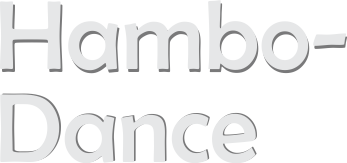
Sweden, the Land of the Midnight Sun, has contributed a diverse array of ingenuity to the world culture. From the trends of Vikings, H & M, the Pirate Bay and Ikea, the world has been gifted with the Hambo dance of Sweden as well. It would be rare if a folk dancer does not know about the Hambo dance. The Hambo is one of those top favourite numbers that might be well called as one of the Sweden’s most famous exports. In fact, it would be appropriate to symbolize the dance as the northern land’s contributions to Folk and Old–time Dancing as it bears the tradition of being the oldest of all Swedish dances, after Polska. Originated in Sweden, the Hambo is one of the most traditional and widely performed couple dances of Sweden and has been continuously danced since the last hundred years. Despite the regional as well as individual characteristics, the Hambo is basically the same dance throughout Sweden. Hence, in simple words, the Hambo is a part of the family of Swedish dances called Polska. It is rightly called as Hambopolska. Compared to all the other polskas, an important attribute of the Hambo is the partner turn. These turns have made the Hambo typically Swedish and have alone remained essentially the same.
The word ‘Hambo’ is said to have been derived from a Swedish proper name such that the dance may have been originated in a specific geographic location. However, the term is more associated to Waltz and is danced in triple time. Hambo, similar to Waltz, is a classic Swedish couple turning dance in 3/4th time but has a different rhythm. Hambo originated around the turn of the last century, the time of innovation where the couple opens out and moves forward after each set of turns. Perhaps, the Hambo is one of the most well–known folk dances in Sweden, with Swedish cultural groups around the world and with the American folk dancers and hence, the late Gordon Tracie referred to it as ‘the national dance of Sweden’. It was in 1965 that the style of the Hambo was influenced when an annual Hambo competition was introduced in the cultural area of Halsingland. Each July, up to 1500 couples join the competition. However, the course has changed with the participation of fewer dancers. It now begins in Harga and moves up to 4 locations and challenges the participants with varying dance surfaces and conditions. Whether rain or shine, the event takes place and is a full day experience.
Although the music is not heard and dancers are not seen frequently, the tradition of Hambo is alive and welcomed in many parts of the world. The music of Hambo is very recognizable as it follows a beat of 3/4th time and has strong first and third beats of each measure which lends the dance its characteristic ‘up–down’ movement. Hambo music and repertoire involve various styles and tempos. There are slower melodies in Halsingland; two of which include the Hargalaten and Karis Pers Polska. As Hambo is a Swedish Polska, it has a rhythmic character of its own, unlike the classical works of Bach and Handel. Polska rhythm has a secondary emphasis in the third beat of each measure instead of a simple ‘one, two, three’ with emphasis on the first beat of the measure. It serves to ‘lift’ the music on to the following first or the primary beat. Thus, polska music gets its distinctive ‘lilt’ as one taps out polska music as ‘three, one….three, one’.
There are two techniques for a Swedish Hambo namely the regular shoulder–waist position where the man’s right arm is around the woman’s waist and the man’s left arm sharply bent with his hand open upward; or the Swedish closed ‘folk dance hold’ in which the woman’s left hand is on the man’s right shoulder and the woman’s right arm held straight out from the shoulder with her elbow in man’s left hand and her right hand holding man’s left arm above his elbow. The dance is performed in turns as:
- The Man’s Part:
- Beat 1: Begin turning clockwise by keeping the right foot step forward and pivoting on the ball of the right foot.
- Beat 2: Set down turning on the ball of the left foot and continue to pivot facing back in the line of dance.
- Beat 3: Facing towards the centre of the room, bring the ball of the right foot even with the heel of the left foot and continue turning.
- Woman’s Part:
- Beat 1: Place the ball of the foot down on the outside of the dance circle with back in the line of dance and step the left foot around the advancing lead.
- Beat 2: Facing towards the centre of the room, set the ball of the right foot next to the instep of the left foot and continue turning.
- Beat 3: Move a step forward on the right foot and begin pivoting on the ball of the right foot and back to Beat 1.
The few simple variants that characterize the Hambo are mentioned below:
- Outward turn is on bar 8.
- One slow turn clockwise on bar 1–2 is made by the Follower.
- Two turns are made by the Follower on bar 1–2.
- Many turns are made by the Follower on bar 1–2 (3).
G Kowledge of | 0 Comments >>
0 Comments
Leave Comment
Your email address will not be published. Required fields are marked.